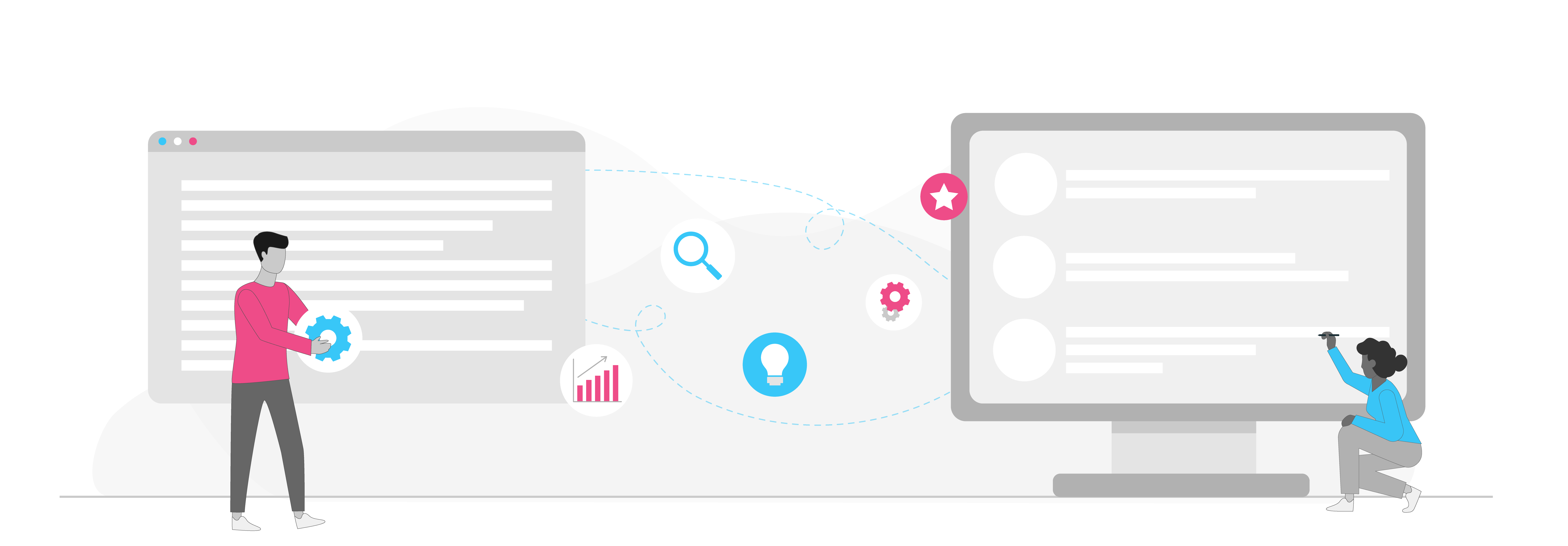In an age where technology’s rapid growth impacts the short-lasting state of attention, the conventional path of learning encounters an array of challenges like never before. Picture a world where information flows ceaselessly and time is a precious currency – here, the traditional methods of education struggle to keep pace. But there is no need to worry because microlearning emerges that is not just another educational term, but a revolutionary method that relies on concision and brevity. Microlearning sculpts bite-sized learning nuggets adapted to today’s knowledge-thirsty minds. In this article, we will explore the advantages of microlearning and how it can help organisations to deliver a better and more impactful learning experience.
Learning in small steps for big gains
The term “microlearning” indicates that learning goes on in small steps by dividing complex topics into short, targeted, and necessary learning pieces for learners. These learning modules, usually only a few minutes long, aim to teach specific knowledge or skills to meet a unique learning objective. It differs from traditional learning, which is often lengthy, monotonous, and challenging to maintain focused attention. Microlearning diverges from traditional learning in several significant ways:- • Concentration and Efficiency: Each microlearning module focuses on one specific learning objective, which helps keep learners’ attention and improves knowledge absorption and retention. Compared to traditional training, which might include lots of materials, microlearning helps reduce information overload.
- • Flexibility: Microlearning modules are short and highly accessible, allowing learners to engage with them according to their schedules. This is especially important for today’s busy individuals with little time to dedicate to learning.
- • Personalization: Microlearning allows to customize the learning content based on learners’ various knowledge levels and learning styles.
- • Continuous Learning: Due to the short duration of the learning modules, microlearning promotes continuous learning as it helps to avoid knowledge loss and ensures that new information is constantly updated and reinforced.

When microlearning meets personalized learning
When the principles of microlearning meet the fundamental principles of personal learning, the effectiveness of learning increases. One of the core principles is adaptability, and microlearning matches this learning approach. This kind of learning works effectively because it provides learners with tailored knowledge suited to their needs, skills, and interests. Interestingly, microlearning’s capacity for personalized content adaptation resonates with our brain’s dominant ways of encoding and understanding information. The brain’s tendency for pattern recognition and individual learning preferences is harmonized through tailored learning content which amplifies engagement and eases information absorption. Microlearning diverges from traditional learning in several significant ways: The success of microlearning also lies in the method’s ability to encourage continuous repetition, which reinforces the learning cycle. Short learning modules provide the unique benefit of being reviewed quickly, allowing the learner to recollect learning content quickly and often. Our brain’s remarkable capacity to grasp and retain information is amplified when subjected to repetitive stimuli, a principle that microlearning expertly harnesses. The process of repetition has long been recognized as a critical driver of effective learning. When we encounter information repeatedly, especially in manageable, bite-sized formats like those found in microlearning, our neural pathways are reinforced, leading to better retention and comprehension. This kind of learning saves our knowledge in long-term memory, making it easier to apply to actual-life scenarios. And the fun part about microlearning is that it taps into our brain’s inherent craving for immediate rewards, capitalizing on the pleasure centres that drive our motivation. By delivering bite-sized doses of knowledge, microlearning triggers a sense of gratification, prompting our brain to not only absorb but also actively pursue additional information. This innate connection between quick rewards and knowledge acquisition is a fundamental aspect that microlearning expertly exploits.Expanding learning horizons
Microlearning can also be a great strategy for gaining knowledge and developing skills since it takes place not just on-site but also using various devices. Microlearning modules can nowadays be accessible via computers, tablets, smartphones, and even digital e-readers because of technological developments. This means learning opportunities are no longer confined to a specific location or time. This flexibility enables employees or learners to tailor the microlearning learning process to their needs and schedules. Microlearning modules are as diverse as their accessibility methods. Short learning videos visually present information and demonstrate real-life examples. Quizzes with interactive questions encourage active learning while allowing immediate skills and knowledge testing. Infographics can effectively deliver complex information in an easily understandable and visually engaging manner. Digital content, virtual reality, or even live streaming tools can also be employed. These different formats allow learners to choose the format that complements their learning styles and preferences. In essence, the accessibility of microlearning across devices and through different formats ensures that learners receive information in a way that resonates with them best. This flexibility and content diversity enables individuals to efficiently and conveniently achieve their learning objectives, promoting knowledge absorption and enhancement.Creating a successful microlearning strategy
Microlearning is more than simply separating corporate training content into bite-sized learning nuggets. A careful approach to developing the learning experience is necessary to reach microlearning’s full potential. Furthermore, incorporating adaptive learning and personalization into current microlearning methodologies has become essential. Here are tips to help you make your microlearning strategy a success:- 1. Structural Excellence: Microlearning demands a deliberate structure to ensure its effectiveness. Rather than merely chopping up longer lessons, focus on creating a seamless flow of concise modules that build on each other. Develop a logical sequence that guides learners through a cohesive learning experience, improves recall by linking similar topics, and prevents information overload.
- 2. Adaptive Learning: Incorporating adaptive learning techniques enhances the power of microlearning. Utilize technology to track learners’ progress and adapt content based on their performance. This approach ensures learners are consistently challenged appropriately, preventing boredom and frustration. Adaptive microlearning fosters deeper engagement and facilitates the development of a broad skill set.
- 3. Personalized Engagement: Customization is key in modern learning, and microlearning is no exception—tailor content to individual learners’ preferences, needs, and learning styles. Learners respond better to personalized microlearning modules, making the learning experience more relevant and motivational. This personal touch boosts the chances of information retention and application.
Conclusions
Microlearning is not only a way of learning but also a path to advanced and efficient knowledge extraction. This revolutionary technique combines modern technology with the science of learning, opening the door to a world of information in small yet effective doses. As your partners on this journey, we are here to help you create a dynamic and customized microlearning strategy based on the needs and goals of your organization. The effect you can make in your corporate training is priceless, from personal attention and engagement to improved knowledge retention and implementation. We are ready to make a difference to your long-term learning success!Share this post on social media:

